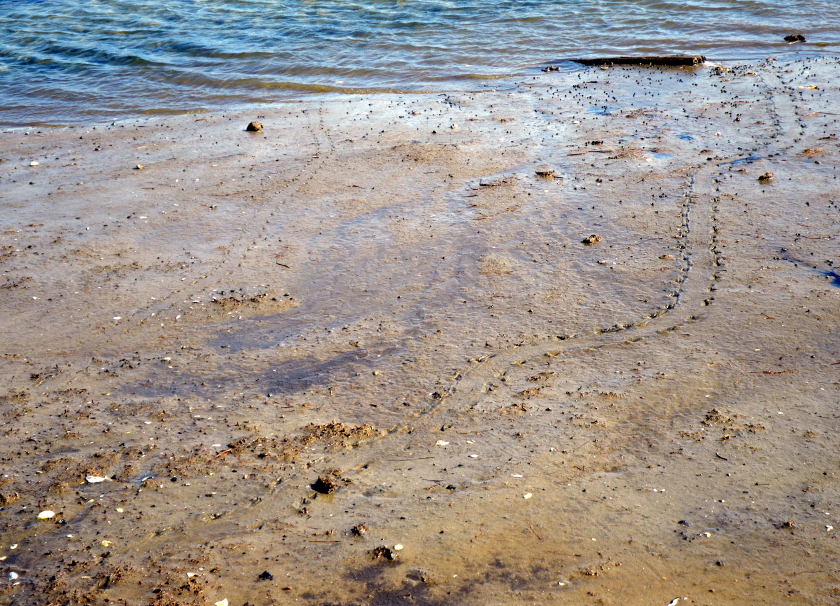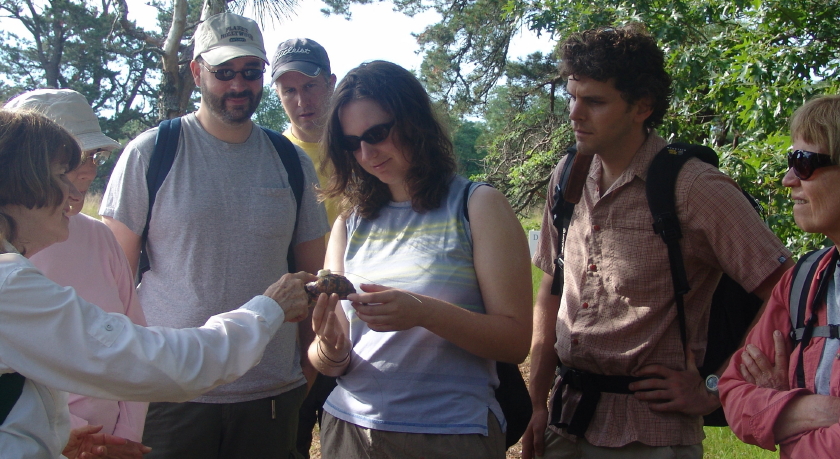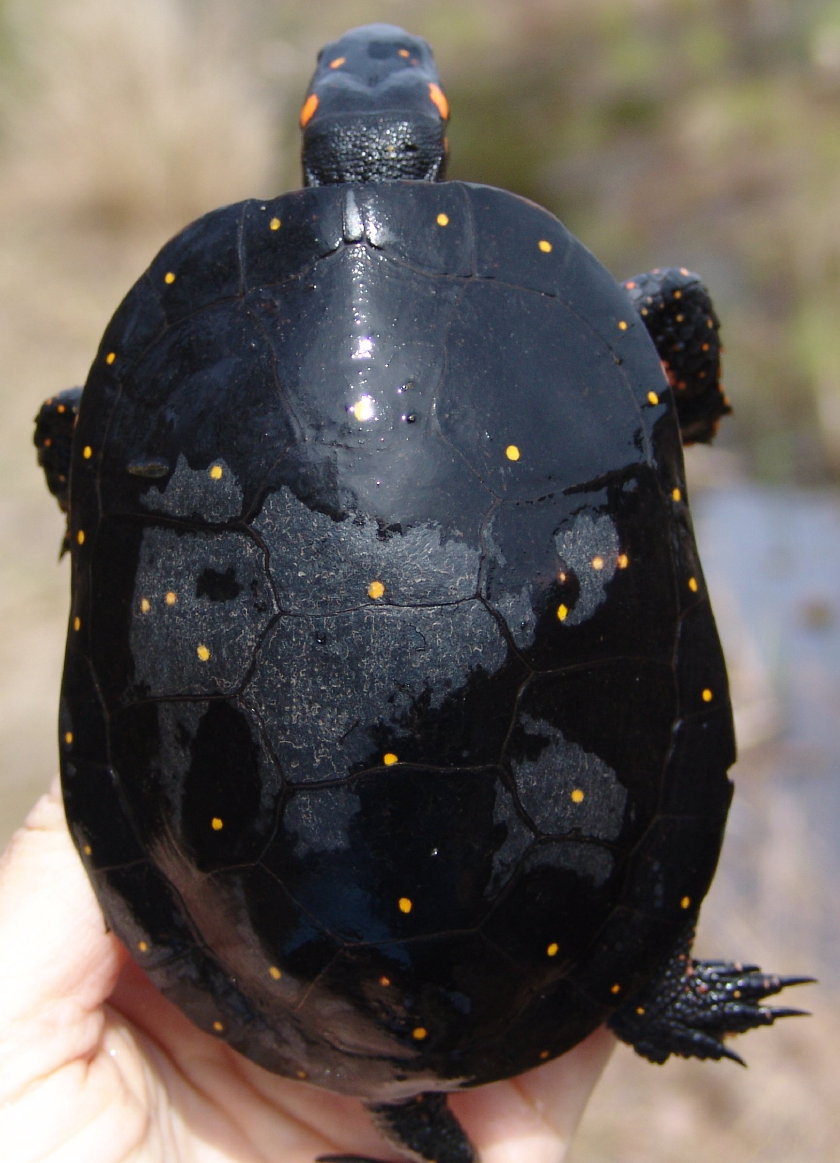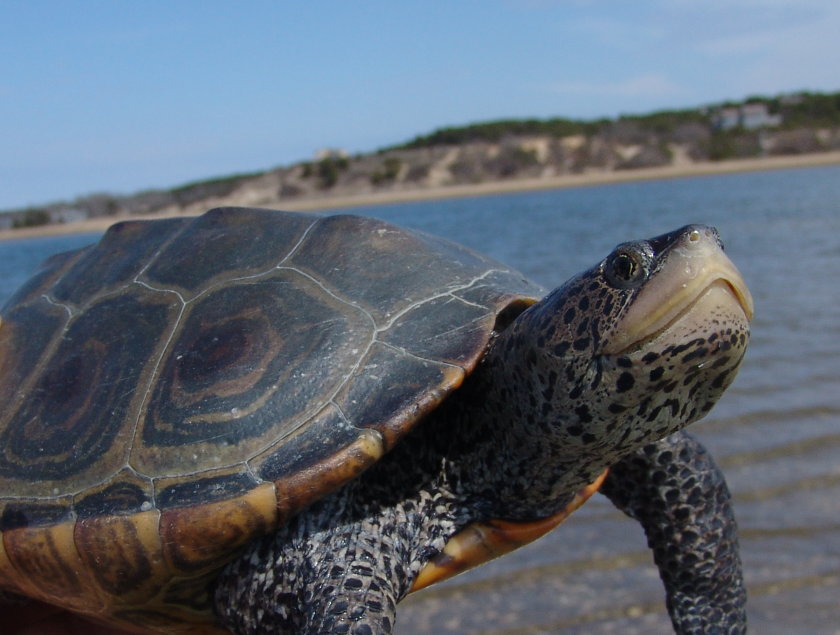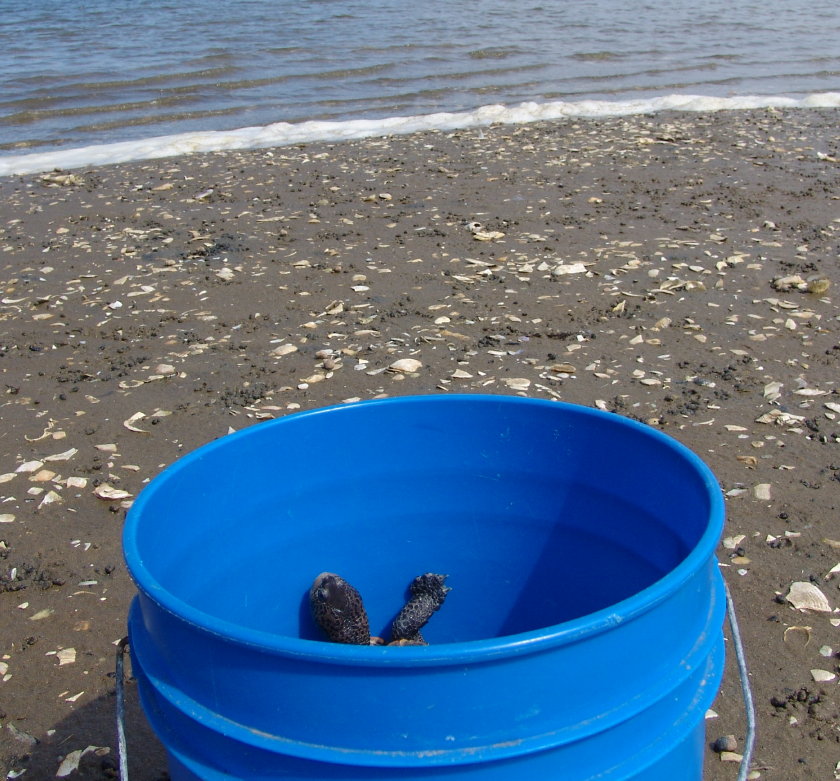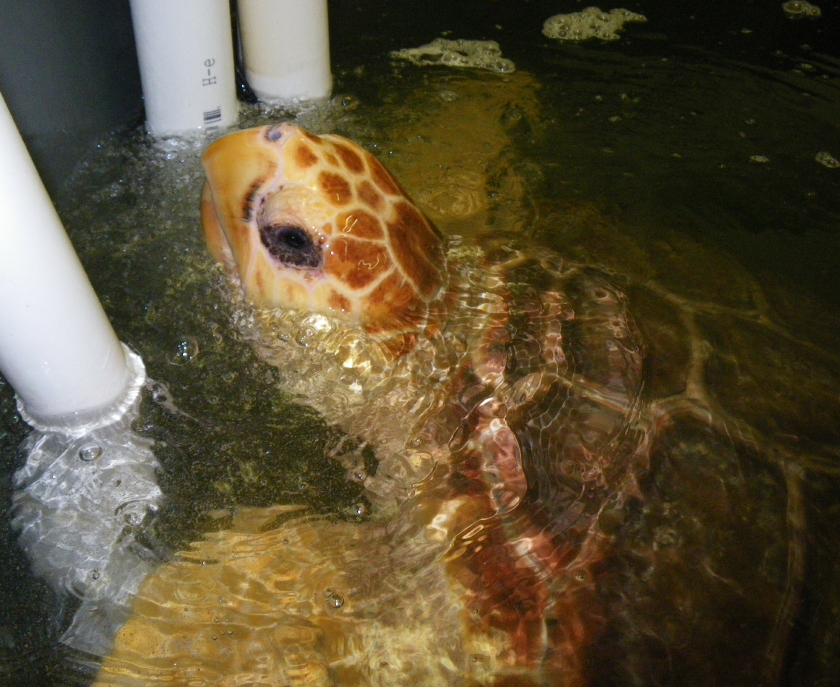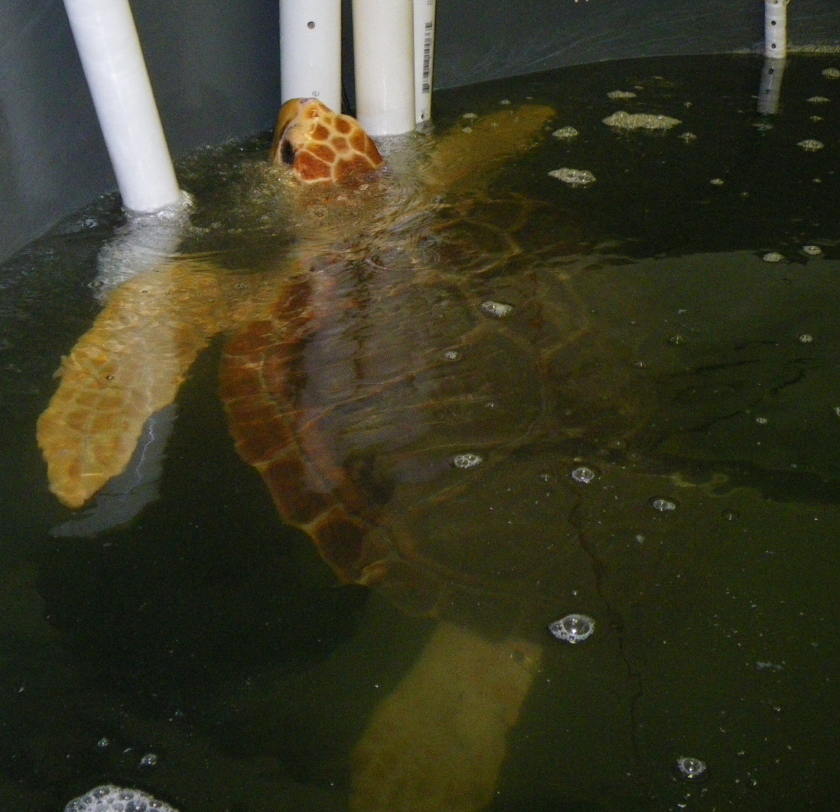Diamondback Terrapin Emerges from Ooze
Spring finally arrived on the Outer Cape this weekend. Saturday brought bright sunshine and a strong warm southwesterly breeze to Wellfleet with temperatures inching into the 60s. The Turtle Journal team scooted over the tinkertoy Lieutenant Island Bridge at mid-tide falling to inspect salt marsh channels for terrapins burrowing out of winter brumation in the soft, oozy quickmud. It is a rare gift to observe a living head poke out of the “black mayonnaise,” soon followed by the leading edge of the carapace and finally the full turtle as it “swims” through the quickmud to the surface. If you’ve ever wondered why terrapins and terrapin researchers have such perfect youthful complexions, no need to ponder any longer. Look at Terrapin #834 above, a mature female we’ve been documenting for the last decade. Now gander at the post-cleanup shot below that illustrates her wrinkle-free skin!
Same Terrapin after Cleanup
After six months buried under the mud, no question that #834 has a few stories to tell.
Wrong Step Creek
Not too hard to figure out why they call it “Wrong Step Creek.” If you make one wrong step into the creek, it will be the last step you ever take. We find emerging turtles in this creek each springtime. The bottom is pure ooze and offers a warm, comfortable, easy blanket into which turtles submerge each winter to avoid freezing in the Great White North. The black disturbed area in the photograph indicates the spot from which male terrapin #9250 emerged on Saturday.
Click Here to View Video in High Quality
Emergence of Male and Female Terrapins from Marsh Ooze
The Turtle Journal team brings you into the oozy creeks south of Lieutenant Island to witness a sight that very few humans have ever seen. The video clip begins with the recovery of male terrapin #9250 from a side channel off Wrong Step Creek, then the documentation of female terrapin #834 as she emerges from another side channel. This day marked the first time that we had observed #9250, but we have a long history of encounters with #834.
Click Here to View Video in High Quality
Meet Female Terrapin #834 Up Close and Personal
She’s one of our beauties. Terrapin #834 weighed in at 1220 grams and measured 19.2 centimeters straight-line carapace length on Saturday. She was born in 1988 and spends her life in the estuaries and tidal flats around Lieutenant Island in South Wellfleet.
#834 Emerging in May 2000
We first encountered #834 as she emerged from brumation on May 4th, 2000. She was buried into the bank of North Creek, a stone’s throw from Wrong Step Creek, tail down and head up. If you look closely at the photograph above, you can detect the forward edge of her carapace framing her face. We can’t believe that we actually saw her as we stepped through the Spartina alternaflora. Back then she measured 18.5 centimeters and weighed 1126 grams. Our field school found her nesting on nearby Marsh Road in late June 2001 (the site of the photograph below) and we found her emerging from brumation in mid April 2002 in Wrong Step Creek. #834 was discovered twice more nesting on Marsh Road in 2003 and 2008, before Saturday’s last encounter.
Sue Wieber Nourse Holds the Adorable Couple
Once cleaned up, female #834 (left) and male #9250 (right) make an adorable couple. You can still see the mud caked inside the front limb cavity of #834. For the record, male #9250 weighed in at 284 grams and measured 12.15 centimeters straight-line carapace length.
Gender Dimorphism: Female Bottom, Male Top
The adorable couple, #834 and #9250, offer a perfect illustration of gender (sexual) dimorphism in diamondback terrapins. Both are mature turtles at approximately 95% of maximum size for males and females within the Cape Cod Bay population of terrapins. So, the size comparison of female (bottom) to male (top) is quite accurate.
Click Here to View Video in High Quality
Return of Terrapin Pair into Wellfleet Bay
The most fun part of research is always the release, returning animals to the wild. Sue Wieber Nourse let the adorable couple go at the edge of Black Duck Creek west of the Lieutenant Island Bridge at the mouth of Wrong Step Creek. The wonderful aftermath of turtle tracks etched into the ooze and leading to the bay topped a perfect beginning to the active season of diamondback terrapins in the Land of Ooze.
 Terrapin Tracks to the Bay (Male Left, Female Right)






